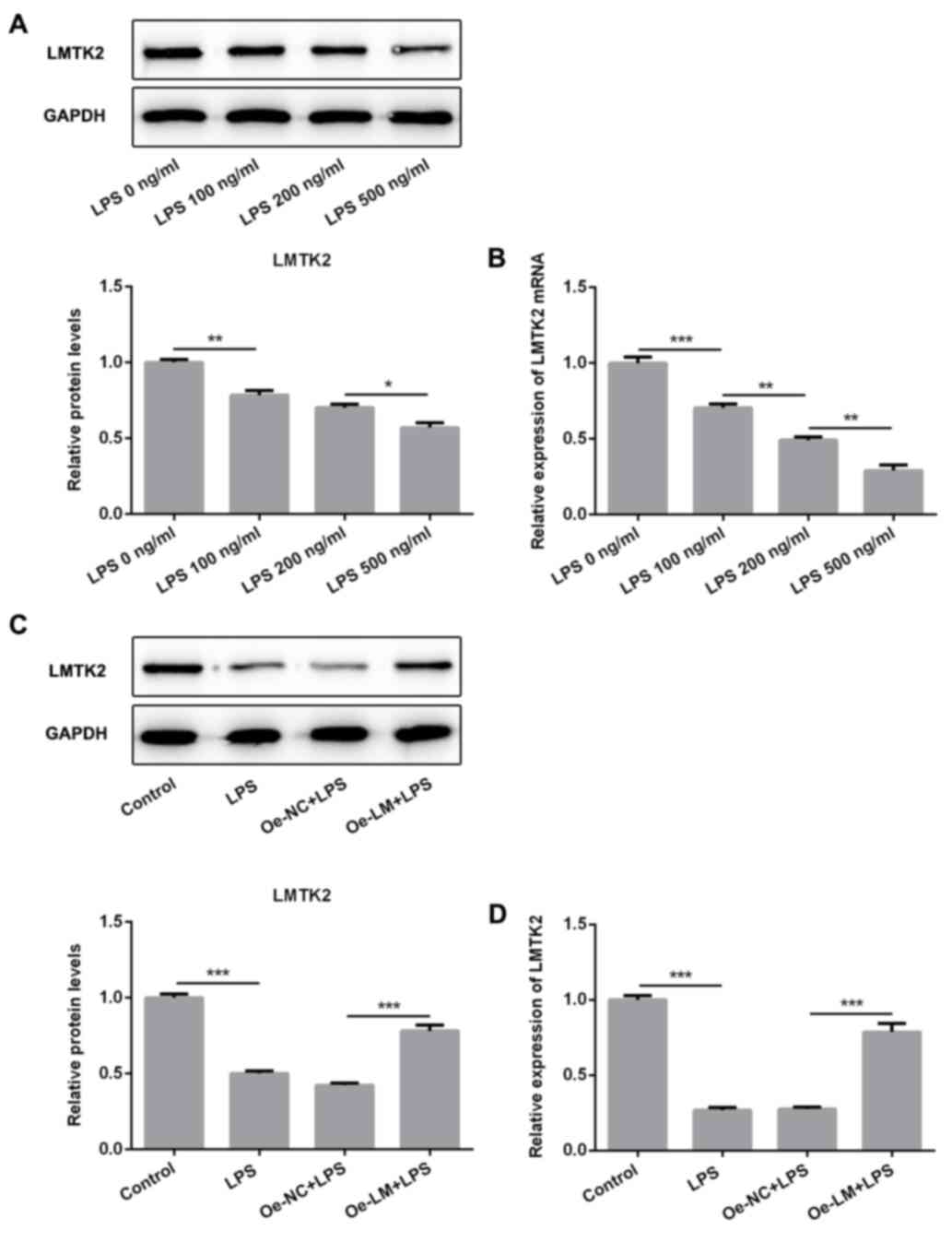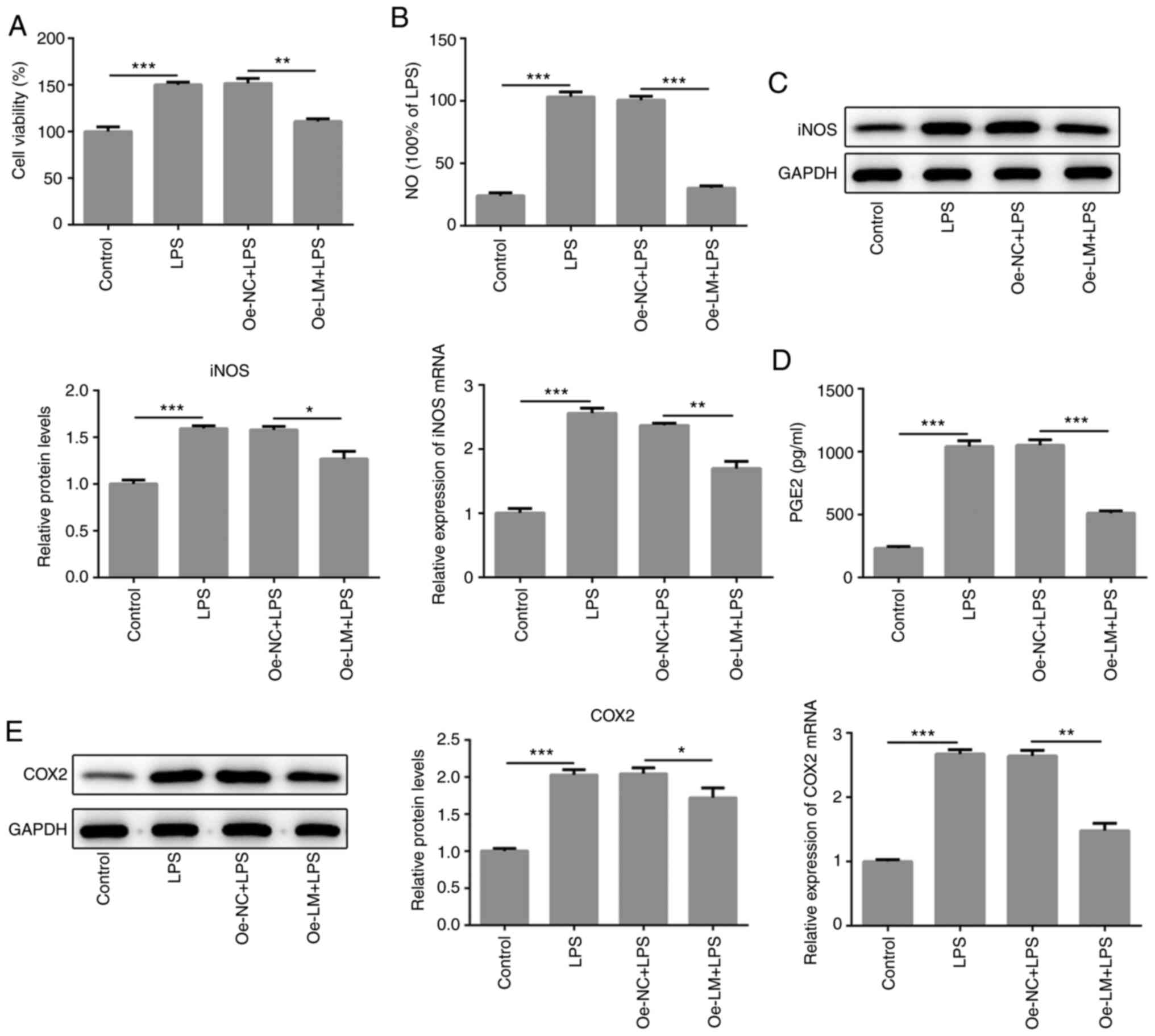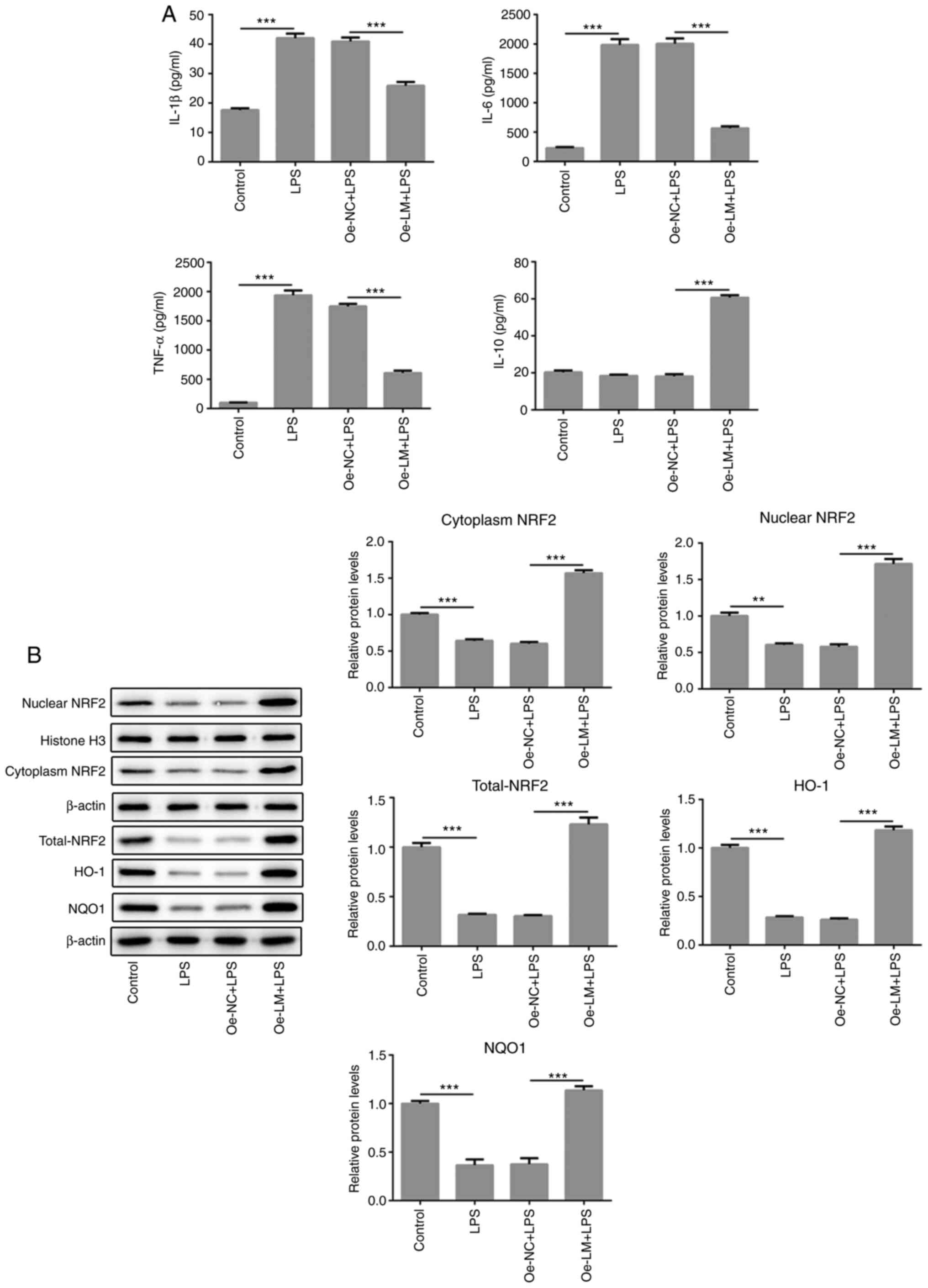|
1
|
Tomomura M, Morita N, Yoshikawa F, Konishi
A, Akiyama H, Furuichi T and Kamiguchi H: Structural and functional
analysis of the apoptosis-associated tyrosine kinase (AATYK)
family. Neuroscience. 148:510–521. 2007.PubMed/NCBI View Article : Google Scholar
|
|
2
|
Wendler F: The LMTK-family of kinases:
Emerging important players in cell physiology and disease
pathogenesis. Biochim Biophys Acta Mol Basis Dis
S0925-4439(18)30515-5, 2018.
|
|
3
|
Bencze J, Mórotz GM, Seo W, Bencs V,
Kálmán J, Miller CCJ and Hortobágyi T: Biological function of Lemur
tyrosine kinase 2 (LMTK2): Implications in neurodegeneration. Mol
Brain. 11(20)2018.PubMed/NCBI View Article : Google Scholar
|
|
4
|
Wang H and Brautigan DL: A novel
transmembrane Ser/Thr kinase complexes with protein phosphatase-1
and inhibitor-2. J Biol Chem. 277:49605–49612. 2002.PubMed/NCBI View Article : Google Scholar
|
|
5
|
Luz S, Cihil KM, Brautigan DL, Amaral MD,
Farinha CM and Swiatecka-Urban A: LMTK2-mediated phosphorylation
regulates CFTR endocytosis in human airway epithelial cells. J Biol
Chem. 289:15080–15093. 2014.PubMed/NCBI View Article : Google Scholar
|
|
6
|
Kawa S, Ito C, Toyama Y, Maekawa M, Tezuka
T, Nakamura T, Nakazawa T, Yokoyama K, Yoshida N, Toshimori K, et
al: Azoospermia in mice with targeted disruption of the Brek/Lmtk2
(brain-enriched kinase/lemur tyrosine kinase 2) gene. Proc Natl
Acad Sci USA. 103:19344–19349. 2006.PubMed/NCBI View Article : Google Scholar
|
|
7
|
Cruz DF, Farinha CM and Swiatecka-Urban A:
Unraveling the Function of Lemur Tyrosine Kinase 2 Network. Front
Pharmacol. 10(24)2019.PubMed/NCBI View Article : Google Scholar
|
|
8
|
Bao H and Gao M: Overexpression of lemur
tyrosine kinase-2 protects neurons from oxygen-glucose
deprivation/reoxygenation-induced injury through reinforcement of
Nrf2 signaling by modulating GSK-3β phosphorylation. Biochem
Biophys Res Commun. 521:964–970. 2020.PubMed/NCBI View Article : Google Scholar
|
|
9
|
Manser C, Vagnoni A, Guillot F, Davies J
and Miller CCJ: Cdk5/p35 phosphorylates lemur tyrosine kinase-2 to
regulate protein phosphatase-1C phosphorylation and activity. J
Neurochem. 121:343–348. 2012.PubMed/NCBI View Article : Google Scholar
|
|
10
|
Tsai LH, Delalle I, Caviness VS Jr, Chae T
and Harlow E: p35 is a neural-specific regulatory subunit of
cyclin-dependent kinase 5. Nature. 371:419–423. 1994.PubMed/NCBI View
Article : Google Scholar
|
|
11
|
Guidato S, Tsai LH, Woodgett J and Miller
CC: Differential cellular phosphorylation of neurofilament heavy
side-arms by glycogen synthase kinase-3 and cyclin-dependent
kinase-5. J Neurochem. 66:1698–1706. 1996.PubMed/NCBI View Article : Google Scholar
|
|
12
|
Li BS, Zhang L, Gu J, Amin ND and Pant HC:
Integrin alpha(1) beta(1)-mediated activation of cyclin-dependent
kinase 5 activity is involved in neurite outgrowth and human
neurofilament protein H Lys-Ser-Pro tail domain phosphorylation. J
Neurosci. 20:6055–6062. 2000.PubMed/NCBI View Article : Google Scholar
|
|
13
|
Zhang R, Li X, Wei L, Qin Y and Fang J:
Lemur tyrosine kinase 2 acts as a positive regulator of NF-κB
activation and colon cancer cell proliferation. Cancer Lett.
454:70–77. 2019.PubMed/NCBI View Article : Google Scholar
|
|
14
|
Goldmann T and Prinz M: Role of microglia
in CNS autoimmunity. Clin Dev Immunol. 2013(208093)2013.PubMed/NCBI View Article : Google Scholar
|
|
15
|
Hickman S, Izzy S, Sen P, Morsett L and El
Khoury J: Microglia in neurodegeneration. Nat Neurosci.
21:1359–1369. 2018.PubMed/NCBI View Article : Google Scholar
|
|
16
|
Lehnardt S: Innate immunity and
neuroinflammation in the CNS: The role of microglia in Toll like
receptor mediated neuronal injury. Glia. 58:253–623.
2010.PubMed/NCBI View Article : Google Scholar
|
|
17
|
Tsuda M, Tozaki Saitoh H and Inoue K:
Purinergic system, microglia and neuropathic pain. Curr Opin
Pharmacol. 74–79. 2012.PubMed/NCBI View Article : Google Scholar
|
|
18
|
Mao SS, Hua R, Zhao XP, Qin X, Sun ZQ,
Zhang Y, Wu YQ, Jia MX, Cao JL and Zhang YM: Exogenous
administration of PACAP alleviates traumatic brain injury in rats
through a mechanism involving the TLR4/MyD88/NF-κB pathway. J
Neurotrauma. 29:1941–1959. 2012.PubMed/NCBI View Article : Google Scholar
|
|
19
|
Aravalli RN, Peterson PK and Lokensgard
JR: Toll-like receptors in defense and damage of the central
nervous system. J Neuroimmune Pharmacol. 2:297–312. 2007.PubMed/NCBI View Article : Google Scholar
|
|
20
|
Hirsch EC and Hunot S: Neuroinflammation
in Parkinson's disease: A target for neuroprotection? Lancet
Neurol. 8:382–397. 2009.PubMed/NCBI View Article : Google Scholar
|
|
21
|
Frank-Cannon TC, Alto LT, McAlpine FE and
Tansey MG: Does neuroinflammation fan the flame in
neurodegenerative diseases? Mol Neurodegener. 4(47)2009.PubMed/NCBI View Article : Google Scholar
|
|
22
|
Livak KJ and Schmittgen TD: Analysis of
relative gene expression data using real-time quantitative PCR and
the 2(-Delta Delta C(T)) Method. Methods. 25:402–408.
2001.PubMed/NCBI View Article : Google Scholar
|
|
23
|
Gupta M and Kaur G: Aqueous extract from
the Withania somnifera leaves as a potential anti-neuroinflammatory
agent: A mechanistic study. J Neuroinflammation.
13(193)2016.PubMed/NCBI View Article : Google Scholar
|
|
24
|
Wardyn JD, Ponsford AH and Sanderson CM:
Dissecting molecular cross-talk between Nrf2 and NF-κB response
pathways. Biochem Soc Trans. 43:621–626. 2015.PubMed/NCBI View Article : Google Scholar
|
|
25
|
Pan H, Wang H, Wang X, Zhu L and Mao L:
The absence of Nrf2 enhances NF-κB-dependent inflammation following
scratch injury in mouse primary cultured astrocytes. Mediators
Inflamm. 2012(217580)2012.PubMed/NCBI View Article : Google Scholar
|
|
26
|
Neymotin A, Calingasan NY, Wille E, Naseri
N, Petri S, Damiano M, Liby KT, Risingsong R, Sporn M, Beal MF, et
al: Neuroprotective effect of Nrf2/ARE activators, CDDO ethylamide
and CDDO trifluoroethylamide, in a mouse model of amyotrophic
lateral sclerosis. Free Radic Biol Med. 51:88–96. 2011.PubMed/NCBI View Article : Google Scholar
|
|
27
|
Frakes AE, Ferraiuolo L, Haidet-Phillips
AM, Schmelzer L, Braun L, Miranda CJ, Ladner KJ, Bevan AK, Foust
KD, Godbout JP, et al: Microglia induce motor neuron death via the
classical NF-κB pathway in amyotrophic lateral sclerosis. Neuron.
81:1009–1023. 2014.PubMed/NCBI View Article : Google Scholar
|
|
28
|
Lin W, Wu RT, Wu T, Khor TO, Wang H and
Kong AN: Sulforaphane suppressed LPS-induced inflammation in mouse
peritoneal macrophages through Nrf2 dependent pathway. Biochem
Pharmacol. 76:967–973. 2008.PubMed/NCBI View Article : Google Scholar
|
|
29
|
Soares MP, Seldon MP, Gregoire IP,
Vassilevskaia T, Berberat PO, Yu J, Tsui TY and Bach FH: Heme
oxygenase-1 modulates the expression of adhesion molecules
associated with endothelial cell activation. J Immunol.
172:3553–3563. 2004.PubMed/NCBI View Article : Google Scholar
|
|
30
|
Xie Q, Wu GZ, Yang N, Shen YH, Tang J and
Zhang WD: Delavatine A, an unusual isoquinoline alkaloid exerts
anti-inflammation on LPS-induced proinflammatory cytokines
production by suppressing NF-κB activation in BV-2 microglia.
Biochem Biophys Res Commun. 502:202–208. 2018.PubMed/NCBI View Article : Google Scholar
|
|
31
|
Zhao J, Bi W, Xiao S, Lan X, Cheng X,
Zhang J, Lu D, Wei W, Wang Y, Li H, et al: Neuroinflammation
induced by lipopolysaccharide causes cognitive impairment in mice.
Sci Rep. 9(5790)2019.PubMed/NCBI View Article : Google Scholar
|
|
32
|
Jung YS, Park JH, Kim H, Kim SY, Hwang JY,
Hong KW, Bae SS, Choi BT, Lee SW and Shin HK: Probucol inhibits
LPS-induced microglia activation and ameliorates brain ischemic
injury in normal and hyperlipidemic mice. Acta Pharmacol Sin.
37:1031–1044. 2016.PubMed/NCBI View Article : Google Scholar
|
|
33
|
Saliba SW, Jauch H, Gargouri B, Keil A,
Hurrle T, Volz N, Mohr F, van der Stelt M, Bräse S and Fiebich BL:
Anti-neuroinflammatory effects of GPR55 antagonists in
LPS-activated primary microglial cells. J Neuroinflammation.
15(322)2018.PubMed/NCBI View Article : Google Scholar
|
|
34
|
Bao Y, Zhu Y, He G, Ni H, Liu C, Ma L,
Zhang L and Shi D: Dexmedetomidine attenuates neuroinflammation in
LPS-stimulated BV2 microglia cells through upregulation of miR-340.
Drug Des Devel Ther. 13:3465–3475. 2019.PubMed/NCBI View Article : Google Scholar
|
|
35
|
Cianciulli A, Dragone T, Calvello R, Porro
C, Trotta T, Lofrumento DD and Panaro MA: IL-10 plays a pivotal
role in anti-inflammatory effects of resveratrol in activated
microglia cells. Int Immunopharmacol. 24:369–376. 2015.PubMed/NCBI View Article : Google Scholar
|
|
36
|
Posadas I, Terencio MC, Guillén I,
Ferrándiz ML, Coloma J, Payá M and Alcaraz MJ: Co-regulation
between cyclo-oxygenase-2 and inducible nitric oxide synthase
expression in the time-course of murine inflammation. Naunyn
Schmiedebergs Arch Pharmacol. 361:98–106. 2000.PubMed/NCBI View Article : Google Scholar
|
|
37
|
El Moussawi L, Chakkour M and Kreydiyyeh
S: The epinephrine-induced PGE2 reduces
Na+/K+ ATPase activity in Caco-2 cells via
PKC, NF-κB and NO. PLoS One. 14(e0220987)2019.PubMed/NCBI View Article : Google Scholar
|
|
38
|
Lee EJ, Park JS, Lee YY, Kim DY, Kang JL
and Kim HS: Anti-inflammatory and anti-oxidant mechanisms of an
MMP-8 inhibitor in lipoteichoic acid-stimulated rat primary
astrocytes: Involvement of NF-κB, Nrf2, and PPAR-γ signaling
pathways. J Neuroinflammation. 15(326)2018.PubMed/NCBI View Article : Google Scholar
|

















